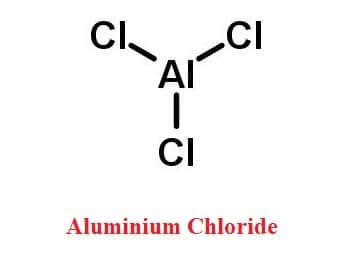STEM education is a curriculum based on the idea of educating students in four vital disciplines – science, technology, engineering, and mathematics. It uses an interdisciplinary, hands-on approach that relates to real-world applications.

Table of Contents
STEM Education-Key Points
- Includes collaborative problem-solving
- Emphasis on both critical and creative thinking
- Approach related to real-world applications
- Emphasis on the connections between science, technology, engineering, and mathematics
- Not a new subject
Stem Education Meaning
The word “STEM” is the acronym for science, technology, engineering, and mathematics.
It’s not just about integrating these subjects.
It’s about designing learning that engages collaborative problem-solving.
In addition, the objective of this approach is to use deep disciplinary knowledge of science, technologies, and mathematics to solve problems.
What is STEM Education and Why it is Important?
For many years the four vital subjects of science, technology, engineering, and mathematics have been taught in isolation.
In contrast, the STEM curriculum approaches emphasize the connections between and among these disciplines.
Furthermore, It creates critical thinkers, increases science literacy, and enables the next generation of innovators.
In addition, STEM enables students to explore real-life-related concepts. As a result, they develop a passion for it and hopefully will pursue a job in the advanced field. For instance, making Math and science both fun and interesting helps the students to do much more than just learn.
Above all, interdisciplinary activities provide hands-on and mind-on lessons for the students.
Benefits and Limitations of STEM Education
Benefits
- Workforce preparation.
- Promotes Gender Equality.
- Career possibilities from an early age.
- Fosters ingenuity and creativity.
- Encourages experimentation.
- Increases science literacy.
- Encourages teamwork.
- Teaches problem-solving.
- Teaches kids about the power of technology and innovation.
Limitations
- Lack Of clear-cut Standards.
- Doesn’t start early enough.
- Elitism.
- Without any guidelines for teachers, there are no continuous standards set when teachers are changed.
- Most teachers have not received proper training on how to assess student learning.
Important Links
- Some schools in the UK teach it outside the curriculum via a STEM club.
- A scenario-based, approach can be an effective way to teach this subject.
- STEM Learning Centre can be checked to find more primary activity ideas.
- Real-world problems for children are available at Practical Action.
- Use James Dyson’s Foundation Challenge Cards – choose from 52 different interesting activities.
Summary
STEM education is a unique approach to teaching and learning, one that includes individual students’ learning styles and interests because It has something to offer every student. However, we need more research to better understand the potential benefits and limitations of this particular education for students, teachers, and schools.
Related Links
Artificial intelligence
Cloud computing
Software Engineering
Machine learning
Additive manufacturing
Frequently Asked Questions (FAQs)
1. What skills do you need for the stem?
Basic Understanding Science, Technology, Engineering, and Math.
Besides this, a problem-solving attitude, analytical thinking, and the ability to work independently are also required.
2. Is this program good?
Advocates of this education system say that it can provide a variety of benefits for students, including improving their problem-solving skills and preparing them for lucrative careers. Therefore, this curriculum is getting famous day by day.
3. What is STEM Education?
By definition, It is a broad term used to group together science, technology, engineering, and mathematics. In other words, this term is specifically used when addressing education policy and curriculum choices in schools to enhance competitiveness in science and technology development.
1. What is a compiler in programming?
A compiler is a process that converts high-level programming language source code to low-level machine language.
2. What is the Googlebot called?
Googlebot is a generic name for Google’s web crawler. Googlebot is the umbrella term for two sorts of crawlers: a desktop crawler that mimics a desktop user and a mobile crawler that simulates a mobile device user.
3. Biochip in simple words?
A biochip is a small-scale device that is used to study organic chemicals present in live organisms.
In simple words, a biochip is a small laboratory that can perform hundreds of biological activities concurrently. It is a collection of micro-test sites or microarrays arranged on the surface of a solid substrate that is meant to run many tests at once in order to achieve increased speed and throughput.
4. What Does Decompile Mean?
Decompilation is the process of transforming machine-readable code into human-readable source code that retains the original code’s functionality. The opposite of compiling is decompiling.
5. What does the concept of provisioning mean?
The process of making IT resources, data, and other technical services available to users and customers is known as provisioning. It’s a broad term that encompasses a wide range of services, the most significant of which is initial service setup.
6. How does the concept of brainstorming work?
Brainstorming is a group activity in which each member expresses their ideas as they arise. Ideas are classified and graded at the end of the session for further action.
7. What is the concept of canonical in computer sciences?
Canonical refers to an attribute’s standard state or behavior in computer science. This term is derived from mathematics and is used to denote unique and/or natural concepts.
8. What is meant by the Internet of Things?
The Internet of Things (IoT) is a computer concept that aims to turn our physical environment into a complex and dynamic network of linked objects on a massive scale. In other terms, the Internet of Things refers to physical items equipped with sensors, computing power, software, and other technologies that communicate with and exchange data with other devices and systems over the Internet or other communication networks.
9. Define alliteration?
Alliteration (also known as head rhyme, start rhyme, or front rhyme) is a linguistic method in which a string of words or phrases uses the same letter or letter combinations over and over. ‘Tasty tacos,’ for example, is an alliteration, but ‘thirty typists,’ is not since the letters ‘th’ and ‘ty’ do not sound the same.
10. Is Python a compiler?
Python is an interpreted language, which means that a Python program’s source code is translated into bytecode before being run by the Python virtual machine. Python differs from major compiled languages such as C and C + + in that Python code does not need to be produced and linked in the same way that code for these languages does.
11. What is money laundering?
Money laundering is the process of concealing the origins of illegal money by passing it through a complex sequence of banking transactions.
12. What is smurfing?
Many criminals participate in an activity called smurfing.
Smurfing involves dividing cash gained through illegal activities and giving the funds to different people (the Smurfs).
Smurfs proceeds to make multiple deposits into multiple accounts at different banks.
13. What is gross pay meaning in simple words?
Gross pay meaning refers to the amount of money that an individual earns throughout a given period of time before any deductions are made.
14. Are gross pay and basic pay the same?
Gross pay and basic pay are not the same. The basic wage is the amount agreed upon between a company and its employee, excluding bonuses, overtime, or other forms of additional remuneration.
On the other hand, a gross salary includes overtime pay and bonuses but excludes taxes and other deductions.
More Links
STEM Education| 5 Easy Key Points
What is Software Piracy?
mu (µ )-A Greek Letter
What Is an Au Pair|Au Pair Meaning & Average pay
What is Microfarad?
More Interesting Links
Alliteration Definition
Energy of Light
Crest of a Wave| Wave Properties| Easy Key Points
Electric Field Units & Definition
Displacement| Physics
- BCl3 Lewis Structure in four simple steps - November 1, 2023
- PH3 Lewis Structure in four simple steps - October 8, 2023
- PF3 Lewis structure in four simple steps - September 24, 2023




